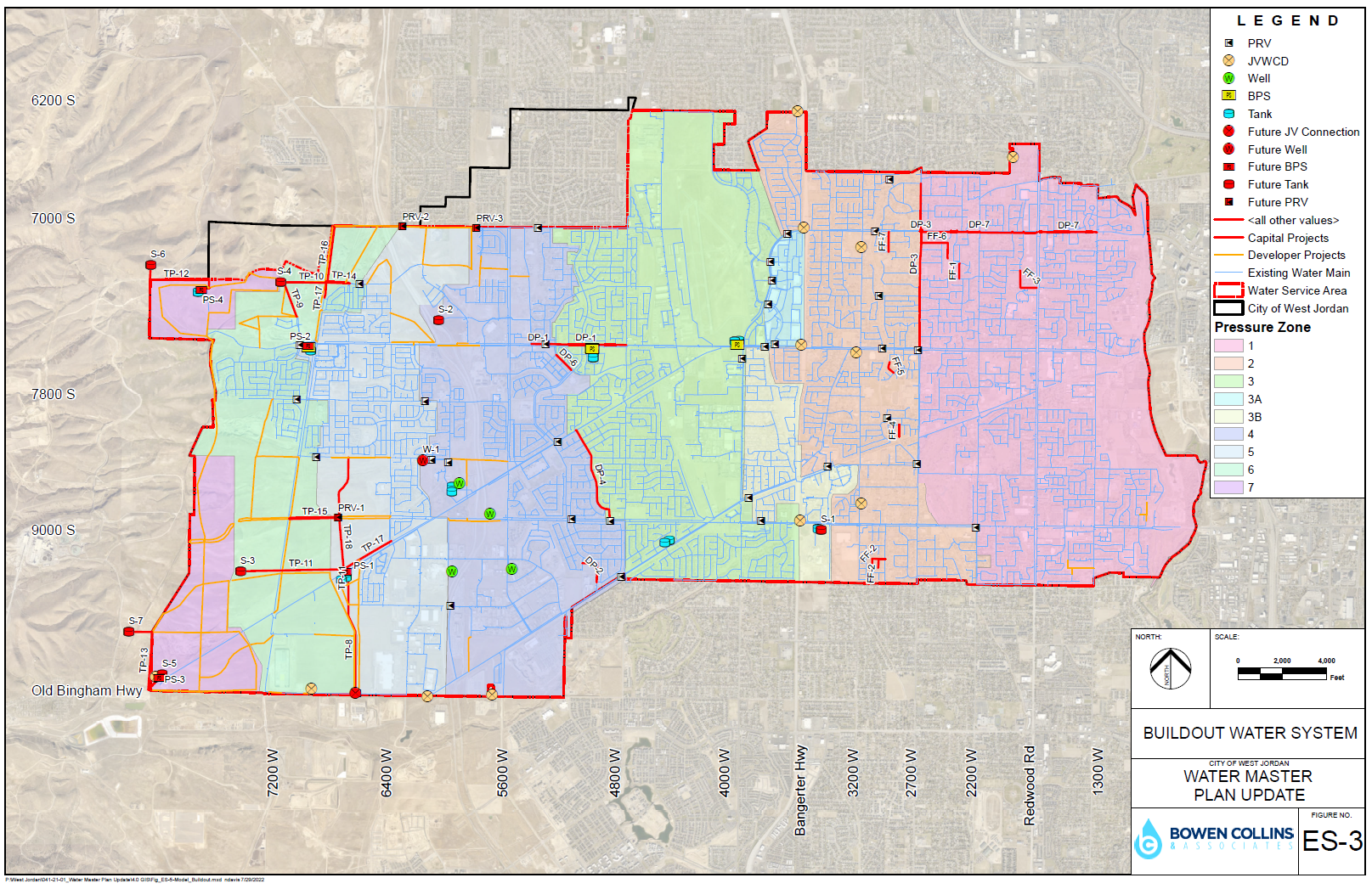DISTRIBUTION SYSTEM IMPROVEMENTS
A hydraulic computer model was used to evaluate the performance of the City's water system for both existing and projected future conditions. Performance was evaluated relative to:
• Pressure within the system during peak demand conditions - Maintain 50 psi for peak hour conditions.
• Pressure within the system during peak day demands with fire flow - Be capable of conveying required fire flow with a residual pressure of 20 psi. This includes 1,000 to 1,500 gallons per minute in residential areas and 2,000 gpm and 4,000 gpm in commercial areas.
• Maximum pipe velocities - Limit pipelines velocities generally to 7 feet per second and in no case to more than 10 ft/sec during peak hour demands.
• Conveyance capacity to storage reservoirs - Be capable of maintaining storage reservoir levels during a peak day (i.e. storage reservoir is allowed to fill and drain as necessary throughout the day, but receives enough water each day to replenish overall storage).
Figure ES-3 shows the distribution system improvements necessary to meet the criteria above in the City water system. Table ES-10 summarizes the recommended projects by project type and associated costs for these projects. These improvements include new pipes necessary to serve new growth for developing areas. It is worth noting that the location for developing projects are schematic and it is anticipated that the alignments will be adjusted to match frontage roads or road alignments as areas develop.
Improvement Type | Project Cost |
Distribution & Transmission Pipelines | $34,158,000 |
Booster Pump Stations | $12,650,000 |
Storage | $82,000,000 |
Wells | $1,500,000 |
Rehabilitation & Replacement (10 years) | $50,000,000 |
TOTAL | $180,308,000 |
